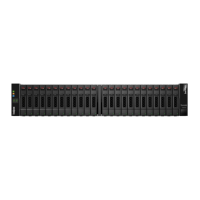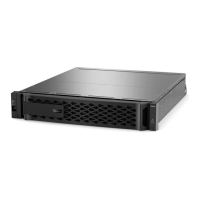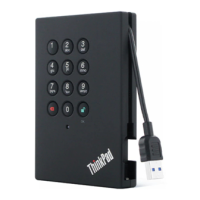replacement HIC to lock down when you bring it online.
•
An ESD wristband, or you have taken other antistatic precautions.
•
A #1 Phillips screwdriver.
•
Labels to identify each cable that is connected to the controller canister.
•
A management station with a browser that can access ThinkSystem System Manager for the
controller. (To open the System Manager interface, point the browser to the controller’s domain
name or IP address.)
6.4.1. Step 1: Place controller offline (duplex)
If you have a duplex configuration, you must place the affected controller offline so you can safely
remove the failed HIC.
Steps
1.
From the Details area of the Recovery Guru, determine which of the controller canisters has the
failed HIC.
2.
Back up the storage array’s configuration database using ThinkSystem System Manager..
If a problem occurs when you remove a controller, you can use the saved file to restore your
configuration. The system will save the current state of the RAID configuration database, which
includes all data for volume groups and disk pools on the controller.
◦ From ThinkSystem System Manager:
a.
Select Support › Support Center › Diagnostics.
b.
Select Collect Configuration Data.
c.
Click Collect.
Ê The file is saved in the Downloads folder for your browser with
the name,
*configurationData-<arrayName>-<dateTime>.7z*.
◦ Alternatively, you can back up the configuration database by using the following CLI
command:
a.
Download SMcli from ThinkSystem System Manager and set up SMcli command
execution environment.
b.
Execute the following SMcli command:`save storageArray dbmDatabase
sourceLocation=onboard contentType=all file="filename";`
In this command, filename is the file path to which you want to save the database.
Enclose the file name in backslash following double quotation marks (\"). For example:
file="C:\Program Files\CLI\logs\dbmdata.zip"
This command does not automatically append a file extension to the saved file. You
116

